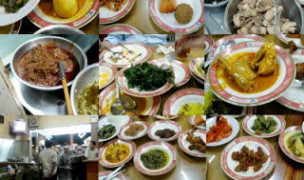 10 Terms
10 TermsHome > Terms > English (EN) > middle class
middle class
In his 2000 campaign, George W. Bush vowed to “tear down the tollbooths to the middle class” and “let everyone get a piece of the American dream.” The middle class represents the unmarked, “unbounded” class in postwar American society as earlier success stories have expanded with new mobility, migration away from markers of class history like urban neighborhoods and ethnicities and an economy of consumption in which workers, bourgeoisie and elites may share commodities and institutions. Nonetheless, this class remains ambiguous, divided in gender, race and interests and uncertain of its status and future—“fear” and “anxiety” prove surprisingly common words in contemporary reports on the middle class.
Boundaries and definitions underscore ambiguous concepts and uses of class as well.
Forbes magazine, for example, labels $15,000–30,000 per annum lower middle class, puts middle class into the $35,000–75,000 income bracket and starts upper-middle class between $75,000 and $150,000 (D’Souza 1999), with concomitant differences in accumulated assets. Yet the same article notes that even the new millionaires assume “middle-class” behaviors, and the article omits a working class entirely (below $15,000 is considered poor).
Other divisions in American society also complicate the discussion. While the white middle class lies vaguely between the very wealthy and the working class, the African American middle class historically has incorporated workers with steady employment, not always skilled, because of the many blacks either under-employed or living below the poverty line. Similarly women of the “middle class” have questioned their definition by domesticity in entering the job market and defining the two-career family as a norm.
Katherine Newman (1999), however, has found that middle-class women face more anxiety and loss in divorce than do working-class women.
As noted in the overview article on class, these categories are defined by social and cultural characteristics as well. The middle class is strongly associated with business ownership and executive status, professional and some intellectual work and higher ranks of government service—“white-collar jobs.” Income is complicated by the role of dualincome families, accumulated investments in homes, stocks and retirement funds and indebtedness. Class is also demarcated by education, social capital, culture and consumption. Middle-class choices in art, fashion, tourism, home and connections distinguish the middle class from stereotypes of the working class, on the one hand, while, on the other hand, resembling and confusing consumption patterns of the upper class. Here, differences often appear in class reproduction: going to Harvard, the opera, or museums are highbrow behaviors open to middle and working classes; having a part of the institution named after your family represents a different status. Ambiguities of mobility and class permeate the image of 1990s high-tech millionaires from middle-class backgrounds.
The middle class is paradoxically characterized as a shared goal (even upper-class scions identify with the middle class in public rhetoric, as George Bush and Steve Forbes have shown), and uncomfortable situations. After the immense prosperity of the 1950s, sections of the middle class often have seen themselves threatened in economic and personal security (recessions, crime, health, downsizing). They have wondered how to keep their status and transmit it to future generations who, in the 1960s at least, sometimes claimed not to want this inheritance. This leads to political divisions between middle-class liberals, who support at least limited social reform, environmental protection and multicultural recognition, and conservatives, concerned with shoring up their position by tax cuts, family support, mortgage deductions, etc. Hence, politicians as different as Ronald Reagan and Bill Clinton have appealed to the middle-class vote.
Mass-media imagery of the middle class takes many of the perquisites of social class for granted, unless the plot calls them into question as an individual or relationship crisis (e.g. Falling Down, 1993; American Beauty, 1999). At the same time, Hollywood glamour and stereotypes of gender, race and beauty may reaffirm middle-class anxiety— is the wedding in Father of the Bride (1950 and 1991) really what our daughter needs? Are out houses as neat and ordered as those of many sitcoms or Martha Stewart? Can our clothes compare with the fashions of You’ve Got Mail (1999) or our lives with the leisure and New York City apartments of television’s Friends (NBC, 1994–)? The development of the African American middle class during and after the 1950s provides an important counterpoint. Mobility became possible in part through changes in the United States job market in a number of employment areas: government civil service, the armed forces, industrial labor and universities. Local and federal administrations were forced, either through political pressure from minority communities or civilrights legislation, to begin combating discrimination in hiring and recruitment. Between 1960 and 1965 alone, 380,000 African Americans acquired white-collar employment, enlarging the black middle class to about 4 million, or one-fifth of the total African American population. Later retrenchment in affirmative action as well as downsizing and deregulation have affected this growth. The size of the black middle class continued to increase during the 1980s—as many as a third of all black families now earn between $25,000 and $50,000. Yet, the manner in which this increase occurred has not been very promising. In many instances, it has reflected both adults in a family moving into the lower-income levels of the middle class.
Members of the black middle class also face the problem of a polarizing American economy. In this, they have not been alone: the overall proportion of the workforce earning poverty-level wages rose from 25.7 percent to 31.5 percent during the 1980s, while the proportion earning three or more times poverty level actually fell, from 14.2 percent to 12.7 percent. The emergence of other immigrant middle classes—Asian American and Latino—has introduced new elements of competition for blacks and whites.
Ironically, media attention to the black middle class has grown as its position becomes more tenuous. Like other groups facing external pressures, threats have made members of this class more vocal and self-conscious about their politics, accentuating a trend, already detectable, towards black nationalism. The establishment of a more clearly defined class also increased the visibility of institutions representing it, from the black churches, colleges and clubs to the NAACP, as well as segregated suburbs and other spaces.
Meanwhile, black middle-class conservatives have questioned both long-time connections of African Americans to the Democratic Party and policies associated with the welfare state. Nonetheless, continuing discrimination and harassment based on “guilt by association” fuel continuing rage.
- Part of Speech: noun
- Synonym(s):
- Blossary:
- Industry/Domain: Culture
- Category: American culture
- Company: Routledge
- Product:
- Acronym-Abbreviation:
Other Languages:
Member comments
Terms in the News
Billy Morgan
Sports; Snowboarding
The British snowboarder Billy Morgan has landed the sport’s first ever 1800 quadruple cork. The rider, who represented Great Britain in the 2014 Winter Olympics in Sochi, was in Livigno, Italy, when he achieved the man-oeuvre. It involves flipping four times, while body also spins with five complete rotations on a sideways or downward-facing axis. The trick ...
Marzieh Afkham
Broadcasting & receiving; News
Marzieh Afkham, who is the country’s first foreign ministry spokeswoman, will head a mission in east Asia, the state news agency reported. It is not clear to which country she will be posted as her appointment has yet to be announced officially. Afkham will only be the second female ambassador Iran has had. Under the last shah’s rule, Mehrangiz Dolatshahi, a ...
Weekly Packet
Language; Online services; Slang; Internet
Weekly Packet or "Paquete Semanal" as it is known in Cuba is a term used by Cubans to describe the information that is gathered from the internet outside of Cuba and saved onto hard drives to be transported into Cuba itself. Weekly Packets are then sold to Cuban's without internet access, allowing them to obtain information just days - and sometimes hours - after it ...
Asian Infrastructure Investment Bank (AIIB)
Banking; Investment banking
The Asian Infrastructure Investment Bank (AIIB) is an international financial institution established to address the need in Asia for infrastructure development. According to the Asian Development Bank, Asia needs $800 billion each year for roads, ports, power plants or other infrastructure projects before 2020. Originally proposed by China in 2013, a signing ...
Spartan
Online services; Internet
Spartan is the codename given to the new Microsoft Windows 10 browser that will replace Microsoft Windows Internet Explorer. The new browser will be built from the ground up and disregard any code from the IE platform. It has a new rendering engine that is built to be compatible with how the web is written today. The name Spartan is named after the ...
Featured Terms
Oral cancer
Oral cancer or mouth cancer, a subtype of head and neck cancer, is any cancerous tissue growth located in the oral cavity. It may arise as a primary ...
Contributor
Featured blossaries
Marouane937
0
Terms
58
Blossaries
3
Followers
The 10 Worst African Economies
 10 Terms
10 Terms
Browers Terms By Category
- General Finance(7677)
- Funds(1299)
- Commodity exchange(874)
- Private equity(515)
- Accountancy(421)
- Real estate investment(192)
Financial services(11765) Terms
- Electricity(962)
- Gas(53)
- Sewage(2)
Utilities(1017) Terms
- Lumber(635)
- Concrete(329)
- Stone(231)
- Wood flooring(155)
- Tiles(153)
- Bricks(40)
Building materials(1584) Terms
- Conferences(3667)
- Event planning(177)
- Exhibition(1)
Convention(3845) Terms
- Material physics(1710)
- Metallurgy(891)
- Corrosion engineering(646)
- Magnetics(82)
- Impact testing(1)



